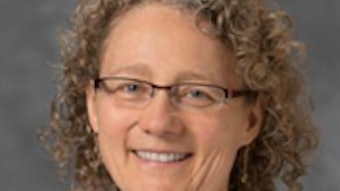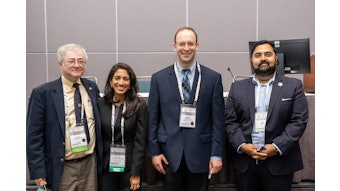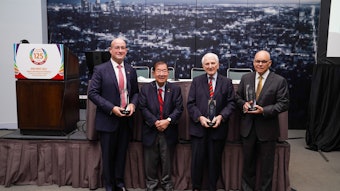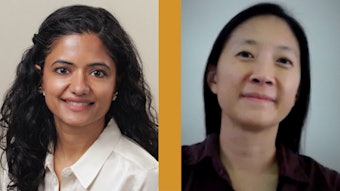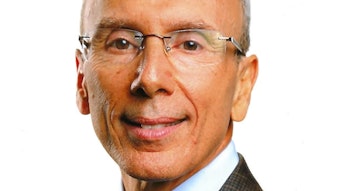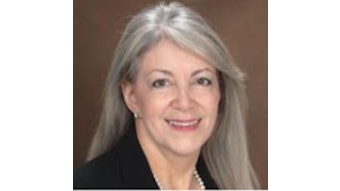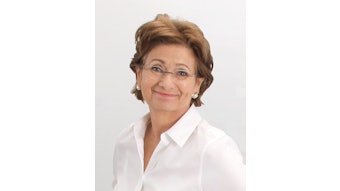Curiosity Leads to Novel Approach to Perineural Cancers
The ins, outs, and twists of perineural malignancies.

Every head and neck surgeon removes keratinocyte cancers. But when Ben Panizza, MBBS, FRACS, MBA, entered practice in Australia, he kept seeing keratinocyte skin cancers that didn’t fit anything he had seen during fellowships in the United Kingdom. and Italy. Skin cancers that followed facial nerves through the skull and into the brain.
“Australia has the highest incidence of head and neck skin cancers in the world,” said Dr. Panizza, who is delivering the Eugene N. Myers, MD International Lecture on Head and Neck Cancer at 8:45 am – 9:45 am PT on Monday, October 4.
“We were seeing skin cancers that get into the nerves and travel along those nerves like trains on a track back into the brain and cause the demise of the patient,” he said. Dr. Panizza is professor of medicine in the Faculty of Medicine at the University of Queensland in Brisbane, Australia, and director of Queensland Head and Neck Cancer Center.
“You see it also in the United States, but this sort of disease is not seen in places like India or Western and Southern Europe. Because perineural spread was so unique to us, I started asking why. We’re combining surgery, immunotherapy, and moving cellular receptors around to get some answers and some new ways to approach cancers.”
Dr. Panizza will explore the ins, outs and twists of perineural malignancies during his presentation, “The Clinical-Research Continuum: From Perineural Spread to Moving Surface Receptors in Improving Patient Outcomes.” The story is as much attitude and philosophy as it is research techniques and novel findings.
Healthcare in Australia is centered on multidisciplinary teams (MDTs), he explained.
“We have head and neck MDTs and skull base MDTs, all the different players in the treatment of an individual coming together, radiation oncologists, medical oncologists, surgeons, radiologists, everyone,” he said. “We have developed a mentality that it doesn’t matter how you treat the patient as long as the patient is cured. Curing the patient is all we’re really interested in.”
Perineural spread is relentless, Dr. Panizza said, but slow and confined to the nerve. Excising the nerve to obtain a negative margin effectively halts the cancer.
“It’s relatively easy to chase the infraorbital nerve back for about eight centimeters and cut it out,” he said. “And the patient can go home the next day. With the V1 nerve, the ophthalmic branch, we can use endoscopes or exoscopes to get back about four centimeters. But if the cancer gets back to the superior orbital fissure, you’re not going to get the nerve out without removing the eye. Those are the cancers that lend themselves to immunotherapy.”
About 45% of these patients respond to immunotherapy, he said.
“If the immunotherapy isn’t doing 100%, what else could we be doing?” he asked. “What we found is that these perineural cancers occur months to years after the primary had been taken out. Perineural spread is a form of regional metastasis, not part of the primary tumor.”
Retrospective analysis of index tumors revealed a common factor: epidermal growth factor receptor (EGFR). About 95% of the index lesions for perineural cancers are EGFR-positive compared to about half of SCC skin cancers.
Cetuximab, an EGFR inhibitor, is commonly used to treat EGFR-positive bowel as well as head and neck cancers. But EGF receptors cycle through tumor cells, moving to the surface to bind EGF, migrating back into the cell with their payload, then returning to the surface. Cetuximab only inhibits receptors expressed at the cell surface. Similarly, the immune system only recognizes surface antigens. EGFRs inside tumor cells are protected.
One solution is to bind EGFRs to the cell surface. High concentrations of prochlorperazine, a dopamine agonist commonly used against nausea, blocks the intracellular circulation of EGFRs for four to six hours, concentrating and clustering EGFR on the cell surface.
“You can time your cetuximab so it can stick to those surface receptors that are stuck to the tumor cell surface,” he explained. “And you can combine that with PD-1 inhibitors, immunotherapy, to boost the effect even further.”
His team has already completed phase I studies in oropharyngeal cancers, which are more common than perineural skin cancers and easier to study.
“This approach lends itself very well to perineural spread, which has such a high EGFR level,” Dr. Panizza said. “The manipulation of cell surface receptors is absolutely novel and should be taken a lot further. We want to get 90%, 100% cure.”
Visit the Annual Meeting & OTO Experience Meeting Daily for more articles.

